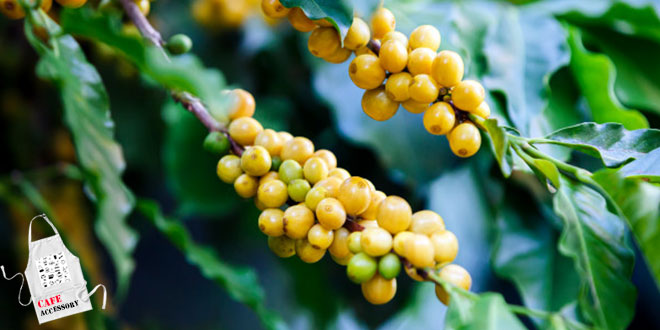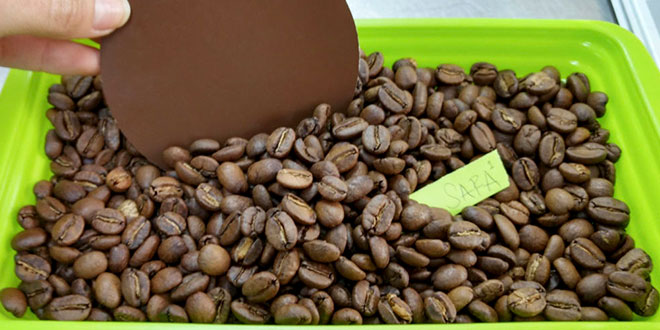کافه اکسسوری – ترکیب کردن قهوه Blending یکچیز فراگیر است و هر قهوه نوشی با آن روبرو میشود. چند دلیل وجود دارد که دانههای برشتهشده قهوه با یکدیگر مخلوط میشوند، یکی از دلایل این است که ویژگیهای مختلف طعمی را باهم در یک فنجان جمع کنند.
راه دیگر صرفهجویی در هزینه تولید است. به همین ترتیب، با مخلوط کردن، دانههای رُست شده میتوان از تغییرات فصلی عرضه قهوه جلوگیری کرد و در عوض کالای مداومتری ارائه داد.
مشکل اصطلاح «ترکیب» این است که درواقع به معنای خیلی زیاد نیست.
در صنایع دیگر، این اصطلاح به ترکیباتی مختلف معمولاً از همان باغ یا دهکده اشاره دارد، اما در قهوه بیشتر به ترکیبی از چندین قهوه از کشورهای مختلف اشاره میشود و هر قهوه موجود در ترکیب بهاحتمالزیاد ترکیبی از انواع مختلف گیاه قهوه است.
در حال حاضر برخی از شرکتهای قهوه بهمنظور برجسته کردن ویژگیهای یک قهوه از یک منبع واحد (قهوههای سینگل اورجین یا تک خاستگاه) آن را از ترکیبهای مختلف جدا و به داستان و منشأ آن توجه میکنند.
بااینحال، اصطلاح «منشأ منفرد» ازنظر فنی هنوز کامل نیست و فقط قهوه را از یک کشور نشان میدهد، بنابراین میتوانید تعداد زیادی قهوه برزیلی را که در مزارع مختلفی از مناطق مختلف رشد کردهاند، داشته باشید و هنوز هم بهعنوان یک ترکیب در نظر بگیرید و بهعنوان یک منبع واحد شناخته نشود.
قهوه های تک خاستگاه
جالب است که درباره یک مزرعه بزرگ که بسیاری از زمینها را در برمیگیرد هم میتوان در همین دسته بندی جای داد.
یک قهوه میتواند از یک مزرعه تهیه شود اما در حقیقت ترکیبی از بسیاری از گونهها باشد. ما اصطلاحات دیگری داریم که خصوصیات بیشتری را نشان میدهد، مانند تعداد زیادی تنوع، میکرولات یا حتی تعداد زیادی نانولات.
در این میان ترکیبسازی در قهوههای مخصوص کمتر محبوبیت پیداکرده است و بهسختی میتوان آنها را ترکیب قهوههای مختلف رُست شده دانست و قادر به استخراج آن قهوهها بهطور مساوی بود.
اینجاست که ایده «ترکیب آمیختگی» وارد میشود. در اینجا، قهوههای رُست شده بهطور جداگانه رُست میشود که مناسب هر دانه قهوه بهصورت جداگانه است و سپس آنها را باهم مخلوط میکند.
بهطورقطع دیدگاههای متناقضی در مورد مزایای ترکیب سازی وجود دارد و انگیزههای مختلفی در مورد دلیل آمیختگی می توان برشمرد.
این روش بسیار موفقی برای بازاریابی و فروش قهوه است و به یک شرکت اجازه میدهد تا چیزی منحصربهفرد تولید و ارایه کند.
منبع: The Coffee Dictionary, Maxwell Colonna
Blending
The coffee blend is a ubiquitous thing. “Try our secret master blend/house blend”, etc.
is an opening gambit that every coffee drinker will have come across.
There are a few reasons why roasters blend. One is to bring different flavour characteristics together; another is to save money and hide problems with a coffee or multiple coffees.
Similarly, by blending, roasters can avoid the seasonal variations of coffee supply and instead offer a more continuous product.
The problem with the term “blend” is that it does not really mean very much.
In wine making, the term refers to a blend of different grapes usually from the same vineyard or village, but in coffee it more often refers to a blend of several coffees from different countries.
Each coffee in that blend will already most likely be a blend of different types of coffee plant.
Some coffee companies now eschew blends in order to highlight the characteristics of a coffee from a single source and focus on its story and origin.
single origin
However, the term “single origin” technically just denotes coffee from only one country, so you could have a blend of lots of Brazilian coffees grown in farms across numerous regions and it would still be sold not as a blend but as a single origin.
It is interesting to think about a big farm that covers a lot of land.
A coffee could come from one farm but in essence be a blend of many plots.
We have other terms that suggest more specificity, such as a single-variety lot, a micro lot, or even a nano lot.
Blending has become less popular in speciality coffee – it is potentially harder to roast a blend of different coffees and then be able to extract those coffees evenly. This is where the idea of “post blending” comes in.
Here, the roaster will roast the coffees separately to find a roast that suits each bean, and then blends them together afterwards.
There are definitely conflicting views as to the benefits of blending and there will be different motivations as to why one might blend.
It remains a very successful way to market and sell coffee, allowing a company to produce something unique to it and with a story customers can connect to.
کافه اکسسوری را در اینستاگرام نیز دنبال کنید.











